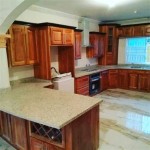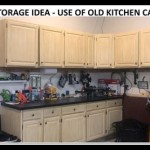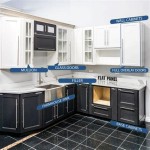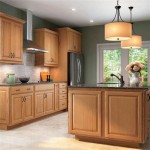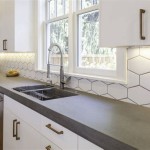Essentials of Plywood for Kitchen Cabinets
Kitchen cabinets are an integral part of any home's functionality and aesthetics. Plywood, a versatile material known for its durability and strength, is often the preferred choice for cabinet construction.
Understanding the essential aspects of plywood for kitchen cabinets is crucial to ensure longevity and optimal performance:
1. Plywood Grades
Plywood is graded based on its appearance and structural integrity. For kitchen cabinets, the most suitable grade is AB or AC, where the "A" indicates the better face side and "B" or "C" the lesser face side.
2. Plywood Thickness
The thickness of plywood for kitchen cabinets typically ranges from 1/2 inch to 3/4 inch. While thicker plywood provides more strength and durability, it may also be more expensive and difficult to work with.
3. Plywood Core Type
Plywood consists of alternating layers of veneer glued together. The type of core, the material sandwiched between the veneers, determines the plywood's properties.
- Softwood Core: Pine or spruce is common, offering cost-effectiveness and ease of machining.
- Hardwood Core: Oak, birch, or maple provide increased strength and durability.
- Composite Core: Made from wood particles or fibers, it offers moisture resistance and stability.
4. Plywood Veneer
The veneer is the outermost layer of plywood, contributing to its appearance and finish. Matching the veneer to the desired cabinet style and aesthetics is essential.
5. Moisture Resistance
Kitchen environments can be humid, making moisture resistance crucial for plywood. Choose plywood with a moisture-resistant glue that prevents delamination and swelling.
6. Formaldehyde Content
Formaldehyde, a potential indoor air pollutant, is found in plywood. Look for plywood with low formaldehyde emission ratings, such as CARB P2 or EPA Tier II.
7. Edge Grain vs. Flat Grain
Edge grain plywood has the strongest and most stable surface, as the wood fibers run perpendicular to the face. Flat grain plywood, with its wood fibers parallel to the surface, is more economical but less durable.
8. Assembly Techniques
Proper assembly techniques, such as using glue, nails, and screws, are essential for the longevity and stability of plywood cabinets.
9. Finish Options
Plywood kitchen cabinets can be finished with paint, stain, or laminate, providing flexibility for personalization and style preferences.
10. Cost Considerations
Plywood for kitchen cabinets can vary in cost depending on factors such as grade, thickness, and core type. Determine a budget and consider the trade-offs between cost and quality.
By considering these essential aspects, you can select the optimal plywood for your kitchen cabinets, ensuring durability, aesthetics, and long-term functionality.

Which Plywood Is Best For Modular Kitchen Designcafe

Which Plywood Is Best For Modular Kitchen Designcafe

A Plywood Kitchen Is Loaded With Personality Sweeten Com

Best Cabinet For Kitchen Plywood Cabinets Choice

3 Types Of Plywood For Cabinets Kitchen Abbotsford

How To Choose The Right Kitchen Cabinet Materials For Your Project Architizer Journal

Best Cabinet For Kitchen Plywood Cabinets Choice

Why Our Ply Kitchens

Plywood Kitchen Cabinet Benefits Sustainable Kitchens

6 Secrets To Best Plywood For Your Kitchen Cabinets Duroply

